Sino-French cooperation set to deepen, with Xi’s visit seen as a new milestone in ties
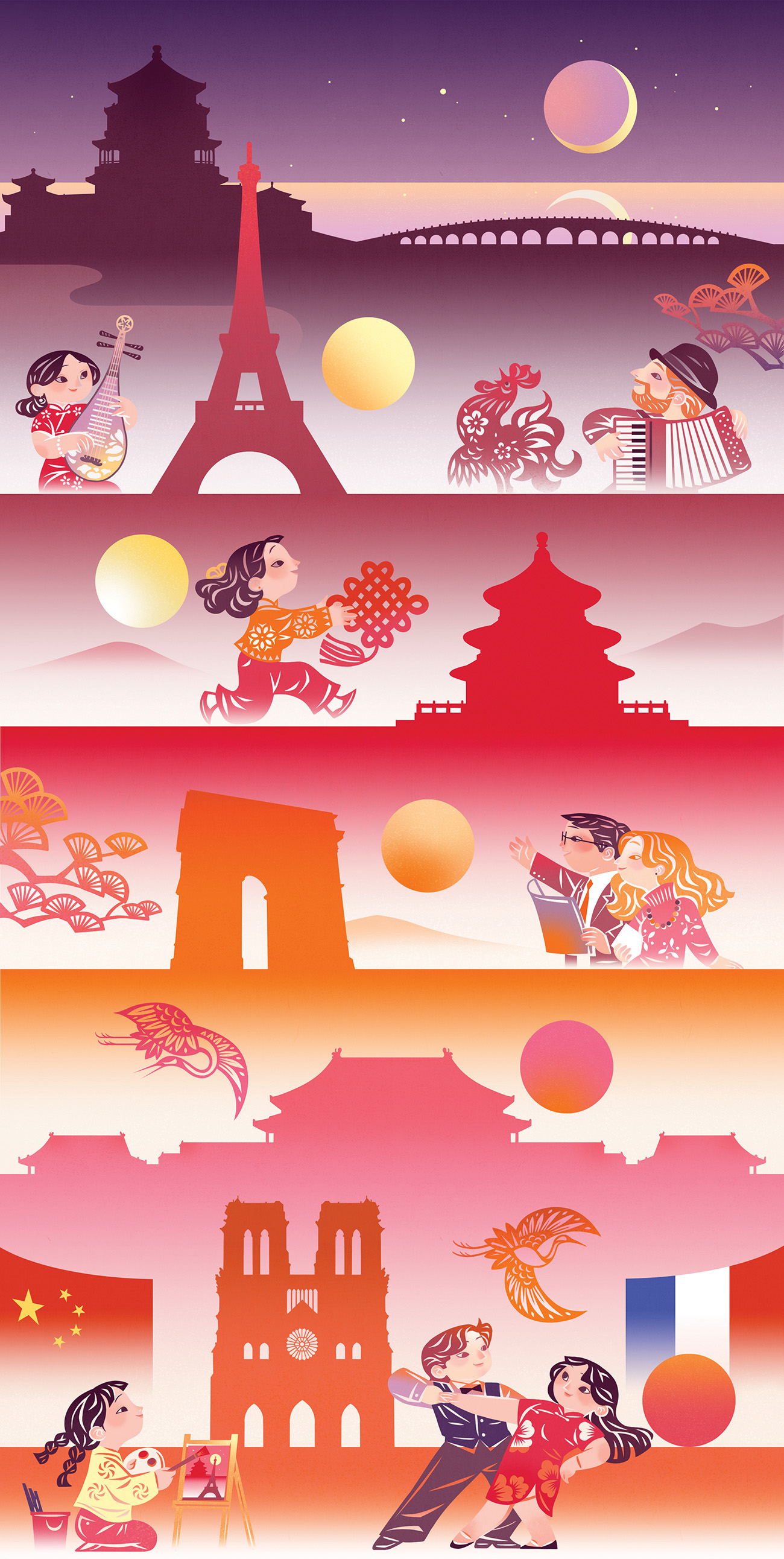
In the early morning of Jan 27 this year, Lu Shaye, the Chinese ambassador to France, and two busloads of guests embarked on a three-hour ride from Paris to Colombey-les-Deux-Eglises in northeastern France.
The trip to the hometown of General Charles de Gaulle, where a memorial site and museum is located, was to pay tribute to the former French leader as the two countries marked the 60th anniversary of their diplomatic ties.
On Jan 27, 1964, China and France announced in a joint communique the establishment of diplomatic relations, making France the first major Western country to do so at the height of the Cold War.
At a news conference on Jan 31, 1964, then-president de Gaulle said: “The French Republic has decided to place its relations with the People’s Republic of China on a normal, in other words, diplomatic level.”
Using a Chinese idiom that suggests that when one drinks water, he or she must not forget where it comes from, Lu said the event on the exact day 60 years later was of “special significance”.
“Sixty years ago, Chairman Mao Zedong and General de Gaulle, with their excellent strategic vision, broke the ice of the Cold War and crossed the divide between different blocs to make a historic decision to establish diplomatic relations at the ambassadorial level,” Lu told a crowd attending the event.
“Gaullism has a broad and profound connotation, but the most profound core is of independence,” Lu said in fluent French, adding that is a shared value of Chinese and French nations.
While de Gaulle never got a chance to visit China before he died in 1970, his great-granddaughter, Nathalie de Gaulle, said thanks to his building of a relationship between the two countries 60 years ago, France and China still live with his legacy today.
“He was a quite pragmatic man. He was a visionary person,” she said, adding that Charles de Gaulle would be “immensely impressed” if he could visit China today.
Georges Pompidou, a longtime prime minister under president de Gaulle, became the first French president to visit China, in 1973, and also the first Western European head of state to visit China while in office.
Former French president Jacques Chirac visited China four times while in office from 1995 to 2007. He was known as a passionate lover of Chinese history and culture and was the first Western leader to visit the Terracotta Warriors in Xi’an. Chirac also impressed many Chinese with his opposition to the Iraq War in 2003.
France’s current president, Emmanuel Macron, has voiced hopes of visiting China once a year. During his last visit to China in April 2023, he said bilateral relations have maintained steady and sound growth.
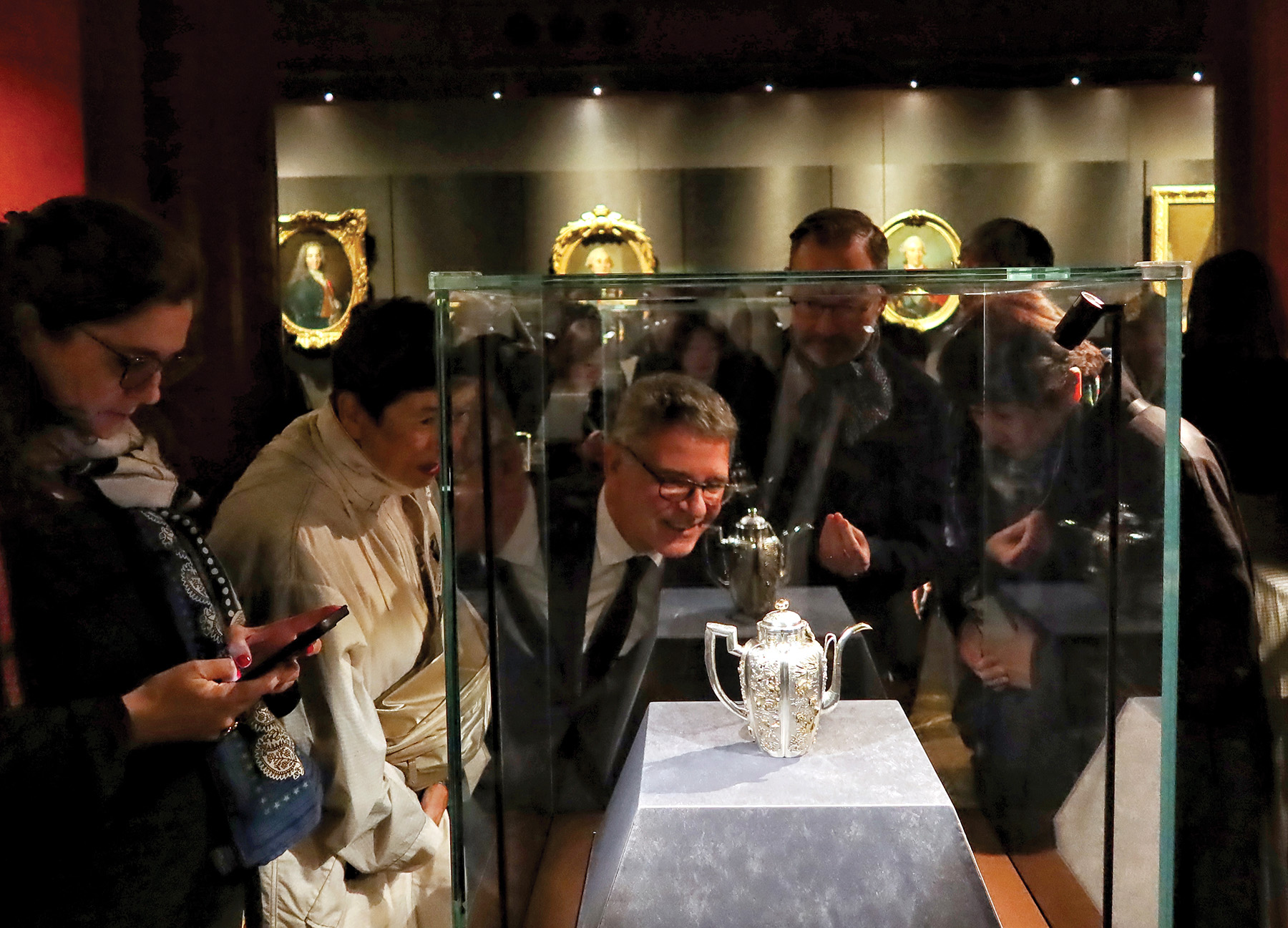
Macron said that despite their different development models, the two countries have respected each other, communicated with candor, and achieved mutual benefits in their wide-ranging cooperation.
The French leader has repeatedly stressed the importance of strategic autonomy and said shortly after he visited China in 2023 that the European Union should not be a US vassal, a message he reiterated on April 25 this year in a speech at Sorbonne University in Paris.
“France is an important strategic power in Europe and the West. Its tradition of being independent has served as a pillar for relations between China and France and between China and the European Union,” said He Zhigao, a researcher at the Institute of European Studies in the Chinese Academy of Social Sciences.
The bilateral relationship has developed by leaps and bounds in the past 60 years. China and France established a comprehensive strategic partnership in 2004 and they have maintained three high-level dialogue mechanisms for strategic, economic and financial, and people-to-people exchanges.
France has led the Western nations in cooperating with China in the fields of civil nuclear energy, aviation, and aerospace, and third-party market cooperation in the fields of clean energy, infrastructure, and finance in Asia, Africa, and Latin America. France was also the first Western nation to sign an agreement with China on science and technology cooperation.
France is China’s third-largest trade partner in the EU after Germany and the Netherlands. China is France’s largest trade partner in Asia and the seventh-largest trading partner globally.
In 2023, total trade between China and France reached $78.94 billion, about 800 times more than the level 60 years ago.
More than 7,000 French companies have invested in China.
In Tianjin, Airbus broke ground for its second final assembly line last September to cash in on the fast-growing Chinese market. The project, which is expected to be operational by the end of 2025, will be able to manufacture both A320 and A321neo aircraft, Airbus’ newest single-aisle aircraft. Airbus boasts a 54-percent market share in China.
STMicroelectronics, a semiconductor giant of French-Italian origin, inked an agreement last year with China’s Sanan Optoelectronics to establish a new 200-millimeter silicon carbide manufacturing joint venture in Chongqing.
Meanwhile, Chinese companies are also bullish on France, especially in high-tech and green industrial sectors, which hold the key to France’s latest reindustrialization strategy.
Huawei is building a 200-million-euro ($214 million) mobile phone network equipment manufacturing factory in France’s Alsace region.
Envision AESC, a subsidiary of China’s Envision Group, is constructing a 2-billion-euro factory in Douai in northern France that will supply the Renault Group with electric car batteries.
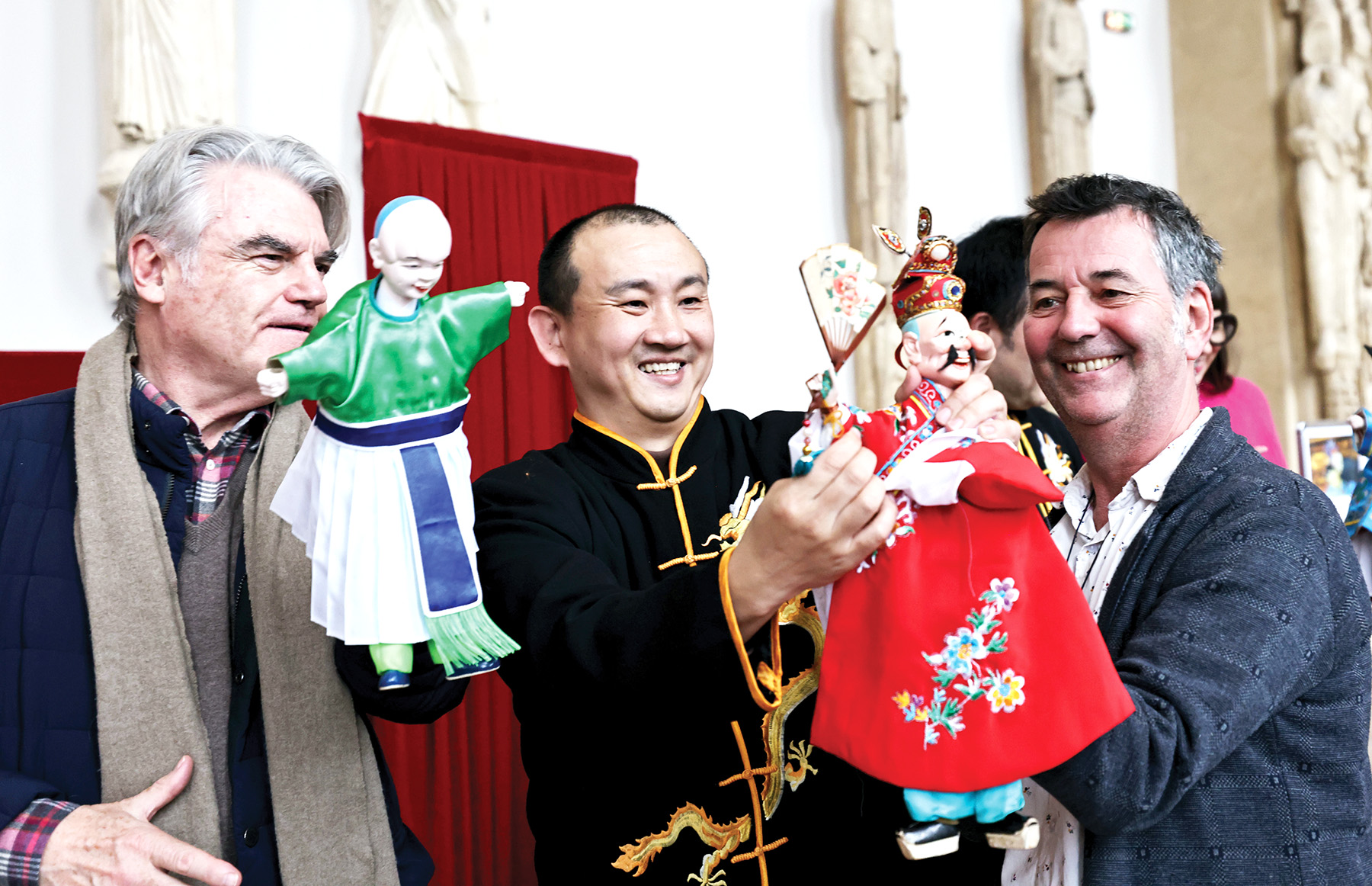
China’s XTC New Energy Materials has set up a joint venture with France’s Orano to produce cathode material and precursors used in electric car batteries in a factory in Dunkirk. The expected investment of 1.5 billion euros is expected to create 1,700 jobs.
“Economically, China and France can achieve much more via cooperation in fields like green transition, nuclear energy, and tourism,” said Lai Suetyi, an associate professor at the Center for European Studies at Guangdong University of Foreign Studies.
However, the bilateral trade ties have been affected by tensions between China and the EU.
Jochum Haakma, chairman of the EU-China Business Association, said the trade relationship will be one of the most important topics on the agenda during President Xi Jinping’s state visit to France in early May.
He was referring to the EU’s anti-subsidy investigation of Chinese electric vehicles and China’s anti-dumping investigation on brandy, which comes largely from France.
“It is in the interest of both nations (China, France) that European investments will stay in China and that the EU/France will stay open for Chinese FDI on a reciprocal basis,” Haakma said.
He stressed the significance of the upcoming summit and its potential to strengthen EU-China relations amid global geopolitical complexities.
“The discussions between the two leaders promise to advance economic cooperation and broader diplomatic efforts toward peace and stability, underscoring the mutual desire to deepen ties and foster a partnership rooted in shared interests and strategic collaboration,” Haakma said.
The year 2024, which has been designated as China-France Year of Culture and Tourism, is set to be a fruitful year for people-to-people exchanges, with a long list of events throughout the year.
In December, China started providing 15-day visa-free entry for French passport holders, while France has also put forward measures to facilitate arrivals from China.
On March 22, the Beauval Zoo in central France unveiled a 2.5-meter-tall bronze sculpture of giant panda Yuan Meng being held in his mother’s arms. Yuan Meng, the first giant panda cub born in France, returned to China in July 2023. French first lady Brigitte Macron, known as Yuan Meng’s godmother, saw him off at the Charles de Gaulle airport.
Chinese and French cities and provinces have established 111 pairs of sister-city ties.
A total of 148 Chinese colleges and universities offer French language majors. Meanwhile, some 46,000 Chinese students have enrolled in French colleges and universities.
In the Chinese mainland, there are 14 Alliance Francaise centers promoting the French language and culture. France hosts 18 Confucius Institutes and one Confucius Classroom teaching Chinese language and culture. About 110,000 French students are studying Chinese.
Cecile Claris, head of the Institution Saint-Joseph de Roquebrune near Nice, said her school has received great support from the Confucius Institute Cote d’Azur to help immerse its students in Chinese culture.
“I’m so grateful. In the last three years, the Confucius Institute has come to our school to hold various Chinese cultural events and achieved great success. Students like them very much,” she said.
China and France are both permanent members of the UN Security Council and nuclear powers.
China played a critical role in helping reach the Paris climate accord in 2015. On Nov 24, 2023, the China-France Carbon Neutrality Center was inaugurated in the presence of Chinese Foreign Minister Wang Yi and then-French Foreign Minister Catherine Colonna to send a strong signal ahead of COP28 — the United Nations climate conference — in Dubai.
Hot spot issues such as the Russia-Ukraine conflict are expected to be one of the key topics when Xi meets Macron.
Lu, the Chinese ambassador to France, admitted in a speech at the French Institute of International Relations on April 19 that China and the EU do not see eye to eye on the Ukraine crisis.
He said that China sees Russia and the EU both as friends and partners, and will not add fuel to the fire.
“China will not align itself with the EU to hurt its relations with Russia, nor will it support one side to fight the other. China will remain objective and neutral and will promote peace talks. This is the biggest support for Europe,” Lu said.
“Despite their differences in culture, history, and political systems, China and France have huge space for cooperation on global governance,” said Ding Chun, director of the Center for European Studies at Fudan University.
Tourism ties set to deepen
Chinese visitor numbers to France seen buoyed by Paris Olympics, stronger cooperation
By Cheng Si
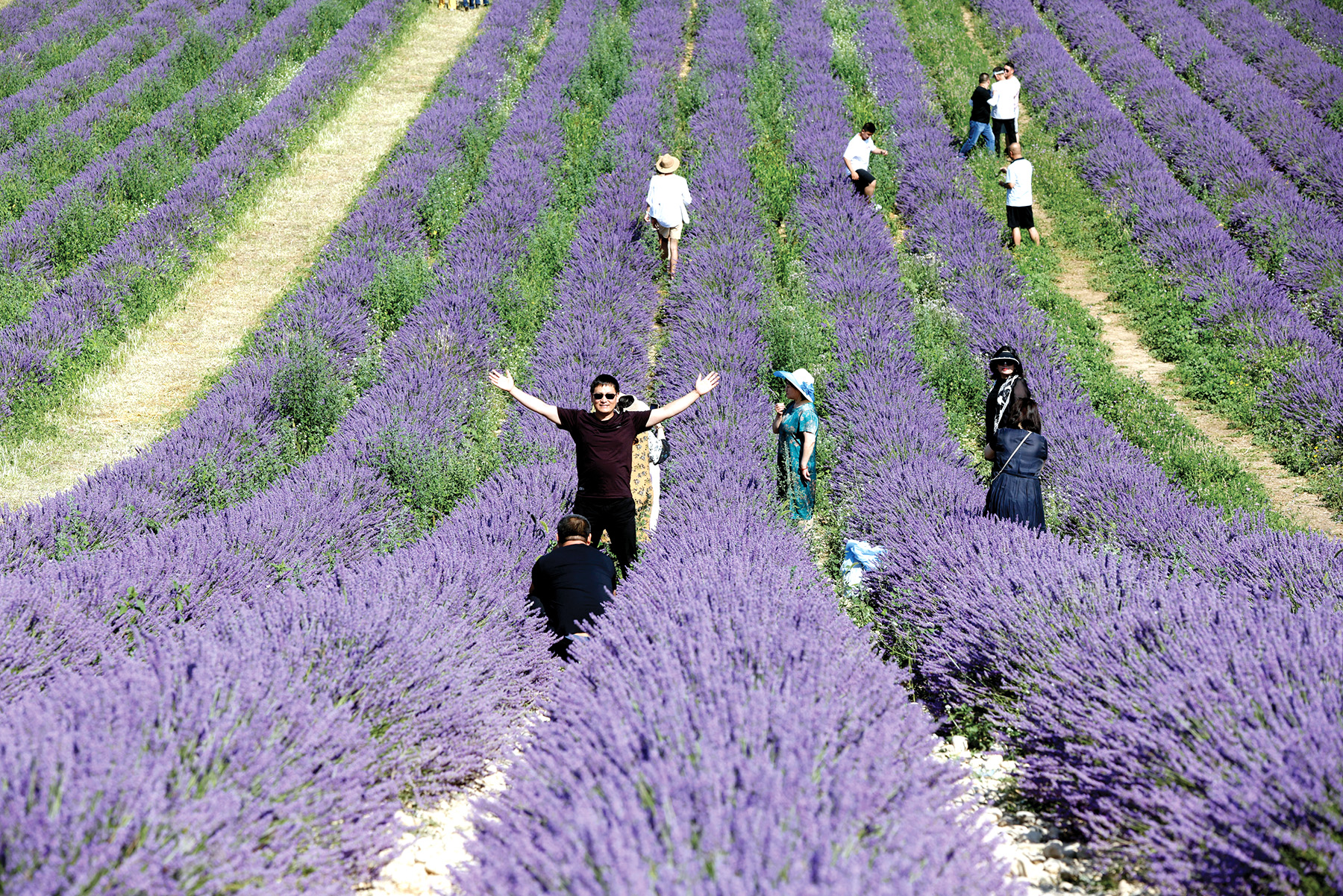
Chinese outbound trips to France will see a peak season this summer amid stronger tourism cooperation between the two nations and the approaching Paris 2024 Olympics, travel agencies and tourism industry insiders said.
China and France have shown mutual friendly gestures in recent years and a series of cultural and tourism-related activities have been staged in the two countries since earlier this year, as 2024 marks the China-France Year of Culture and Tourism and the 60th anniversary of Sino-French diplomatic ties.
“Outbound tourism to long-distance overseas destinations started to resume in March 2023 and countries in Western Europe were the first to see increasing Chinese travelers at the time,” said Qi Chunguang, vice president of Tuniu, an online travel agency.
“Chinese people’s traveling desires to France, Switzerland, and Italy kept running high from May to August 2023, with bookings to France peaking over the summer last year,” Qi added.
He said that tour packages to France are still in hot demand on his platform this year. “Our customers love visiting and taking snaps at some classic spots in France, including the Louvre Museum, Palace of Versailles, Eiffel Tower, and the Paris Opera. They also like to taste French dishes and experience the romantic atmosphere of French cities,” he said.
Experts and tourism insiders expect an upsurge of outbound travel to France this summer as the Paris 2024 Olympic Games approach.
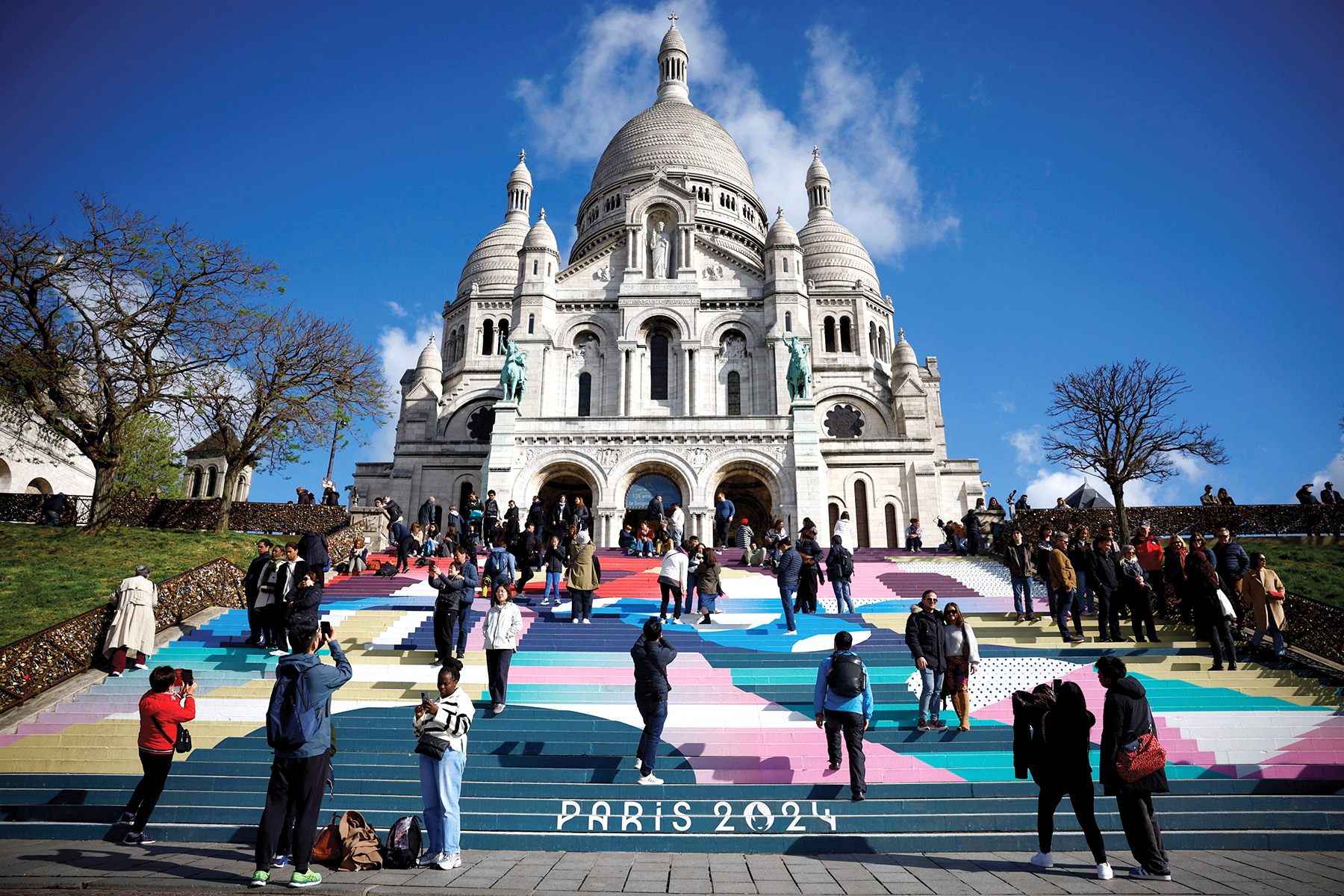
Figures from the travel portal Qunar show that as of April 24, hotel bookings to France marked a growth of 1.3 times from the previous month and it estimates a boom for the country in the coming July and August. It added that bookings to France on the platform in the first quarter of the year have roughly reached the level of the same period in 2019 — before the COVID-19 pandemic hit.
Qi, from Tuniu, said that the Paris 2024 Olympic Games, which will open in late July, are a great opportunity for France to showcase its charms to the world, and the city view of Paris will definitely lure more Chinese travelers.
Catherine Oden, director for China of Atout France, France’s tourism development agency, said in a recent interview with BJnews.com, a news outlet in Beijing, that France aims to shape itself as a sustainable tourism destination, aligning with China and France’s common goal of sustainable development.
She noted that France usually received around 2 million Chinese travelers a year before the pandemic.
The Paris Olympics will help draw more international travelers and boost France’s tourism economy, Oden said. She hopes that more Chinese people can travel to France and lengthen their stays in the country for one or two weeks, or even longer, to enjoy the distinctive lifestyles and cultures of different areas of France.
China has shown goodwill to France by optimizing visa policies to deepen mutual tourism and people-to-people communications.
In November, China announced a unilateral visa-free policy for six countries, namely France, Germany, Italy, Holland, Spain, and Malaysia. Under the policy, people from these six countries holding ordinary passports are allowed to stay on the Chinese mainland for up to 15 days for the purposes of business, tourism, family trips, or transit without a visa.
Also, some tourism campaigns and activities promoting Chinese tourism have been organized in France in recent months. Chengdu, one of the major habitats for giant pandas in Southwest China’s Sichuan province, held a panda-themed art exhibition in Paris in March.
In other initiatives, a public service advertising campaign was unveiled in Paris in mid-April. As part of the campaign, 100 taxis covered with Chinese element prints, including pandas, Beijing’s Temple of Heaven, and banners saying “China welcomes you” in French, will shuttle through downtown Paris for two months.
Europe draws more Chinese postgraduate students
Lure of higher studies in continent attributed to favorable tuition costs, employment policies
By Zhao Yimeng
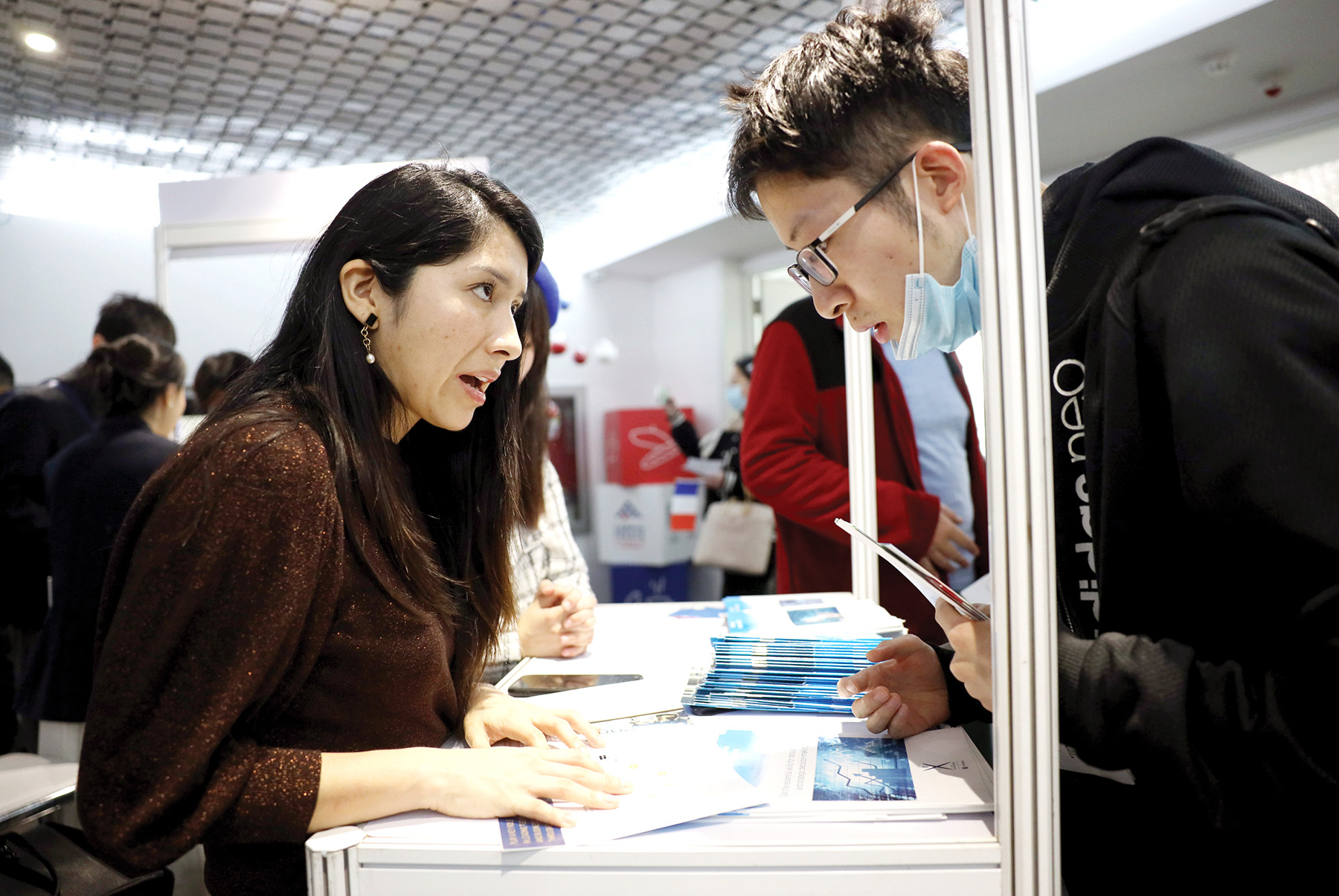
European nations have become popular destinations in recent years for Chinese youth seeking higher education overseas, thanks to wallet-friendly tuition fees and a steady social environment.
Although the United Kingdom and the United States remained the top two countries for Chinese students intending to pursue postgraduate studies last year, their popularity had decreased compared to previous years, according to the 2023 Report on Chinese Student Overseas.
The report, released by educational services provider New Oriental in May last year, showed that 44 percent of Chinese students chose the UK because of factors such as high university rankings, favorable language environment, and preferential visa and employment policies.
Meanwhile, Germany and France were among the top 10 destinations for Chinese students intending to study abroad, both accounting for 9 percent of the total, according to the report.
As Chinese families began to consider more affordable options for their children’s education, the free tuition fee of higher education in Germany has attracted those focusing on the costs and value of studying abroad.
About 35.3 percent of international students who intended to study in Germany did so due to its tuition-free higher education, according to EDUBAO, a service provider for studying in Germany.
Apart from a few private and art universities, public universities in Germany generally do not charge tuition fees, which is a competitive advantage compared with countries like the UK and the US, it said.
Guo Dongxin, a Chinese student who is pursuing a master’s degree in computer science in Germany, said: “The tuition fees and living costs are relatively low.”
Over half of Chinese students chose to study engineering-related courses, the traditional strong discipline in the country, in 2022, according to New Oriental’s report.
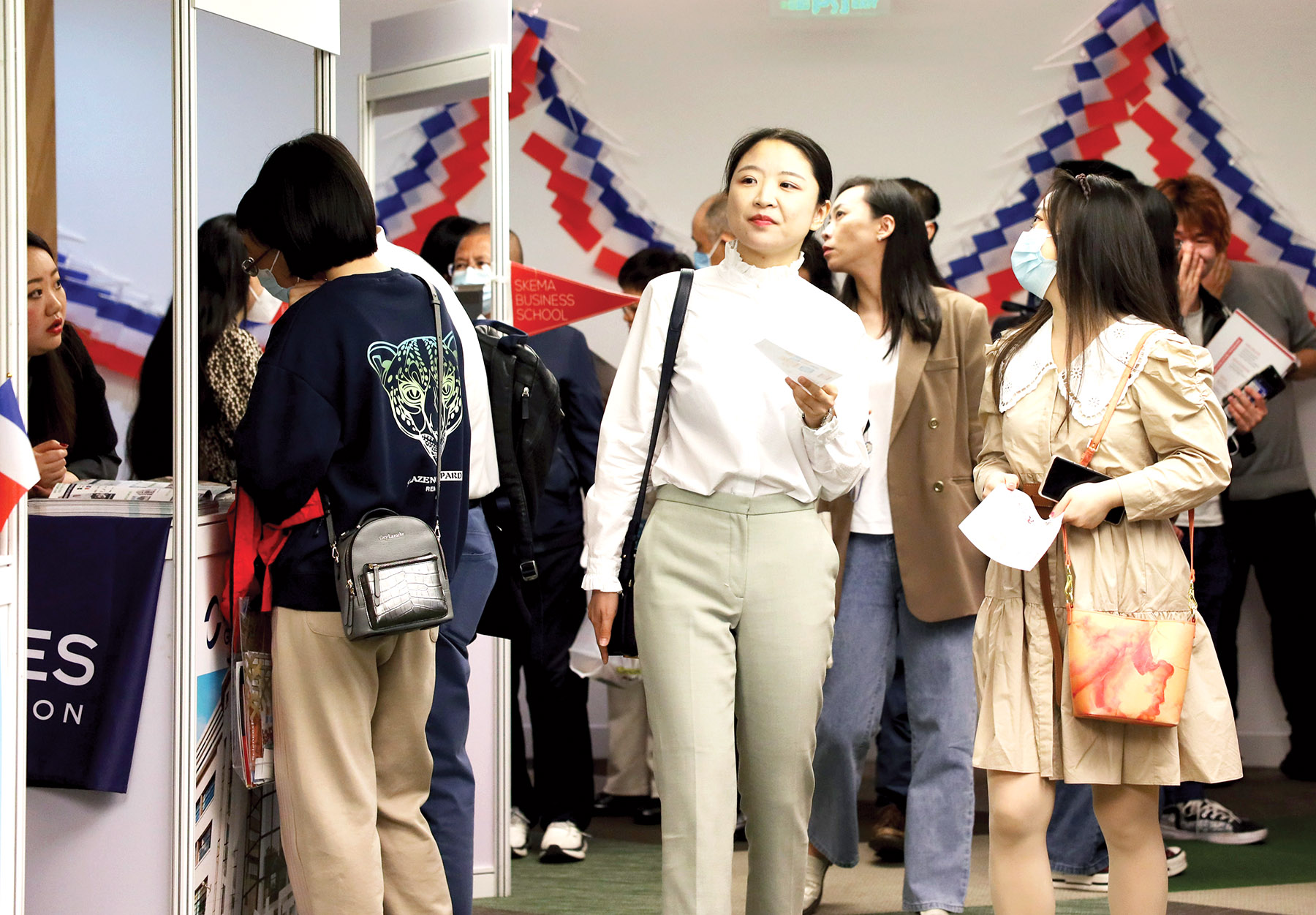
For Guo, who enjoys attending opera and symphony performances, Germany’s musical tradition is another reason to study in the country.
“Not only is it the home of many great composers but its concert halls and opera houses are also world-class, which is easier to pursue these hobbies and further develop them,” he said.
Compared with other countries, Germany has a friendlier employment policy for overseas students, granting an 18-month Job-Seeker Visa. More than 90 percent of students with master’s degrees opted to get employment either in Germany or in China.
The higher education institutions in Germany particularly emphasize the integration of theory and practice, so the courses are highly practical, Guo said.
The neighboring country of France saw a 2 percentage point increase in Chinese student intention to study there in 2023 as it has highlighted the internationalization of higher education and has introduced many English-taught programs.
Additionally, as one of the cradles of world higher education, France boasts a leading position in science and education, which has attracted a considerable number of Chinese students to study there, the report said.
As this year marks the 60th anniversary of the establishment of diplomatic relations between China and France, and the hosting of the 2024 Paris Summer Olympics, the country is expected to attract more Chinese students, said Wu Dan from EIC Education Group, another overseas education consultancy.
More Chinese students intend to study business, science and engineering in France. The proportion of applications for business majors increased from 64.7 percent in 2019 to 76 percent in 2023, EIC’s report showed.
Engineering and business school graduates found it easier to land a job. These schools’ emphasis on practical education provided students opportunities to engage with industry elites and expand their professional networks, the report said.
Past comes back to life
Ancient scroll goes digital to let French viewers savor sights, sounds of Song Dynasty
By Deng Zhangyu
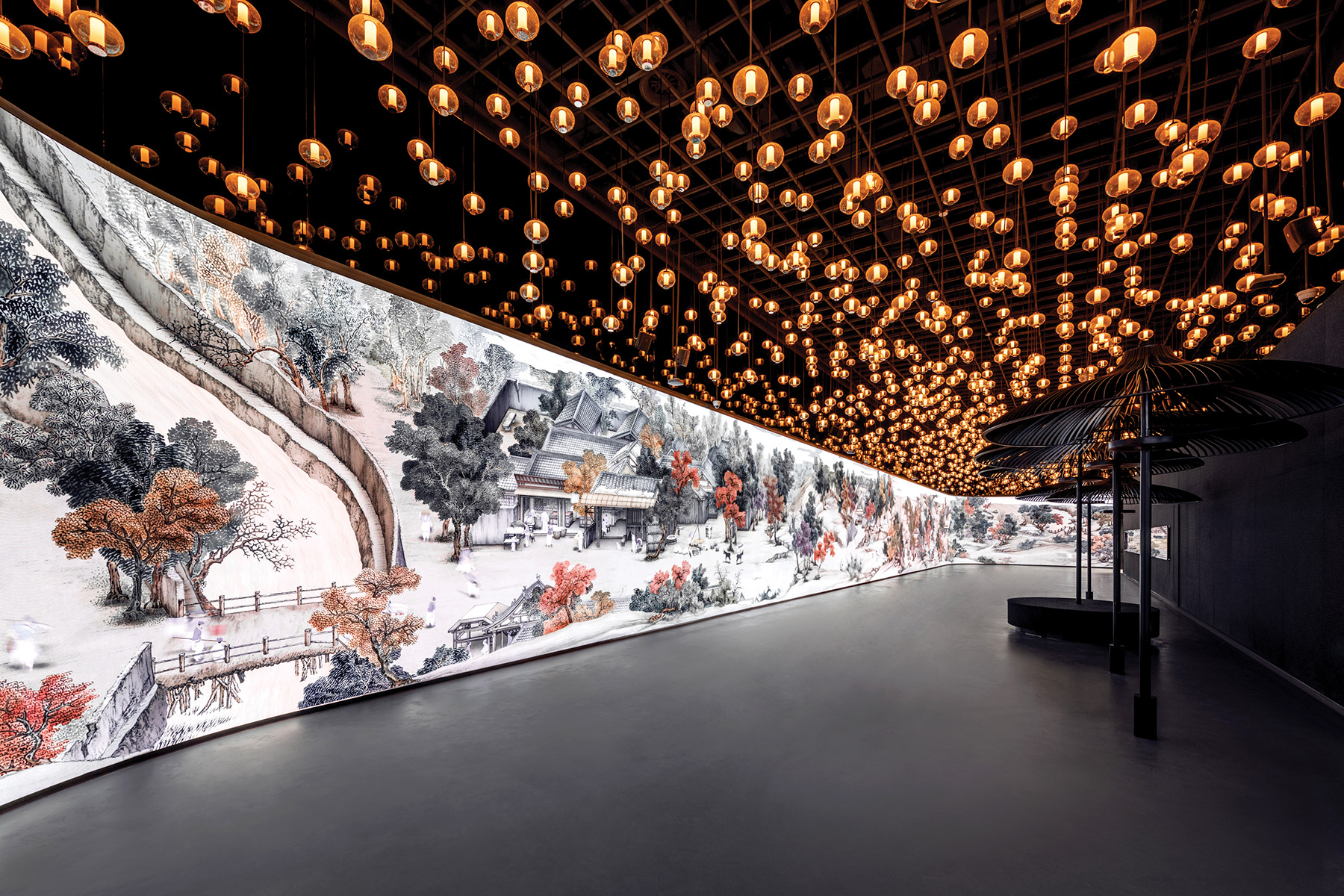
Imagine urban life in ancient China about 1,000 years ago. People enjoyed an array of more than 200 drink options at restaurants that remained open through the early morning hours.
Convenient food delivery services were available, and bottles of water, specifically for tea preparation, were easily accessible. Even pets like cats and dogs could receive grooming and cleansing services.
By utilizing cutting-edge technologies to “enter” an ancient Chinese scroll An Era in Jinling, visitors can create their own “digital avatars” in the painting.
It enables them to talk with vendors on the bustling streets, interact with individuals who seem to have diverse stories, and even meet celebrities from the Song Dynasty (960-1279).
The digital exhibition of An Era in Jinling will meet its French viewers at the Salle Gaveau, an old concert hall in Paris, from May 16 to 18 as part of cultural activities to celebrate the 60th anniversary of the establishment of diplomatic relations between China and France.
The ancient long scroll, An Era in Jinling, depicts prosperous street scenes of Nanjing in Eastern China’s Jiangsu province, which was named Jinling in the Song Dynasty.
It is in the collections of the Deji Art Museum, in Nanjing, and was magnified and projected onto a 110-meter-long screen, showcasing a total of 533 characters, 90 animals, and dozens of horses, carriages, and sedan chairs in the city.
For the Paris exhibition, the museum will showcase a 20-meter screen excerpted from the 110-meter original, tailored to fit the exhibition hall’s space.
Additionally, a replica of an approximately 10-meter-long ancient scroll will be displayed, alongside various intangible cultural heritage products, including Su embroidery, velvet flowers, and fans.
“We hope visitors can learn about ancient China through cutting-edge technologies. It’s a highly immersive and interesting experience,” said Ai Lin, director of the Deji Art Museum.
By wearing special bracelets, visitors can create their own characters in the painting. The interactive exhibition mode of “characters entering the painting, real-time following”, allows viewers to “enter” ancient paintings from a first-person perspective and interact with the figures in the paintings.
“To better connect with the French audience, we create customized content,” Ai explained.
Upon visiting, guests will encounter a seer within the digital artwork, who will request their year of birth and subsequently reveal French celebrities who share the same Chinese zodiac signs.
They will also meet a child at the entrance of the city in the artwork, who gives a brief introduction of Nanjing, sends visitors gifts based on the images of Nanjing’s city wall and the Eiffel Tower, and passionately invites them to Nanjing.
Altogether, the digital version on display will feature more than 20 characters interacting with visitors and talking with them in French, offering a vivid portrayal of daily life during the Song Dynasty.
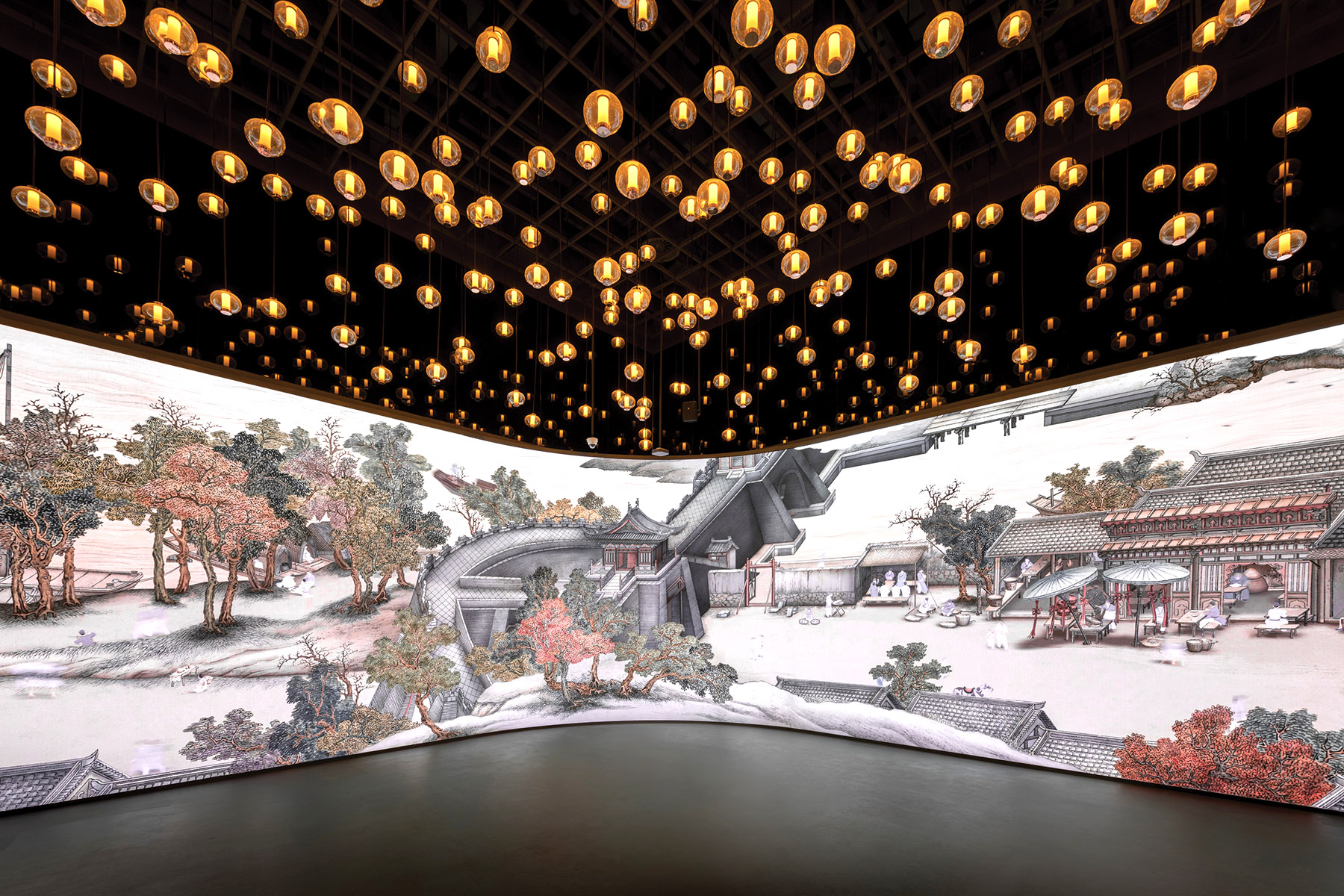
Street cleaners meticulously sweep the streets, while flower vendors sell custom plants and flowers. The pet market provides a range of services, and people indulge in delectable cuisine at upscale restaurants that remain open nearly 24 hours a day.
Additionally, students can be seen reading poems at schools, adding to the rich tapestry of daily life during this historical period.
“Through the immersive interaction, visitors can vividly see people in ancient China were friendly and passionate about life. They knew the importance of education, loved animals, and pursed a high-quality life centuries ago,” Ai said.
She is very confident French visitors will be interested in the show.
It is the second time that the digital version will be exhibited outside China. Last November, it went to Boston, in the United States, and wowed the visitors there.
Inspired by the Boston show, a British visitor traveled to Nanjing to experience the city in person. He made a short video which earned thousands of likes on social media.
“It’s like I’m in the painting and looking into the daily life people from thousands of years ago. These characters talk to me and I can buy things in it. It’s cool!” he explains in his video.
Since its establishment in 2017, the Deji Art Museum has dedicated years to transform its treasured artwork, An Era in Jinling, into a digital version. According to Ai, it took a team of 400 people five years to finish the digitization.
The ancient 10-meter scroll was painted by a court painter, Feng Ning, commissioned by Emperor Qianlong (1711-99). Hailed as “an encyclopedia of Nanjing’s culture and folk customs”, the painting was seen by experts as a visual documentary of Nanjing’s landscapes in the Song Dynasty.
From the rural landscapes, the bustling streets, and the Qinhuai River, to the city walls, the scroll vividly records the economic activities and lifestyles of various social classes.
After prominent digital and non-fungible token, or NFT, artist Beeple, whose real name is Mike Winkelmann, visited the digital version at the Deji Art Museum last autumn, he was surprised and described it as a digital art of the future.
“I think it’s absolutely a digital artwork. By adding these interactive elements and game in it, it represents the future trend of digital art,” said Beeple.
Ai, the museum director, said that many foreign visitors’ impressions of China are still stuck in ancient times. She expects to show them modern China by presenting this digital show.
In addition to the digital version, a replica of the ancient scroll will also be displayed. Videos and products crafted by artisans will be showcased onsite, allowing viewers to glimpse China’s past, present, and future.
As visitors observe the city walls portrayed in the artwork, they will have the opportunity to view a video that showcases the present-day walls in Nanjing.
The artistic depictions of velvet flowers, fans, paper cutting, printing technologies, and Su embroidery featured in the painting will also be presented through either products or videos.
“I’m sure the French audience will have no difficulty in understanding Chinese culture (through) such an interactive and immersive show,” said Ai.
Following the brief exhibition in Paris, she intends to extend the show’s duration in France and is currently in discussions with several museums in the country.
Chinese delights await in Paris
TCM, teas, food among cultural treasures to be showcased in French capital this month
By Deng Zhangyu
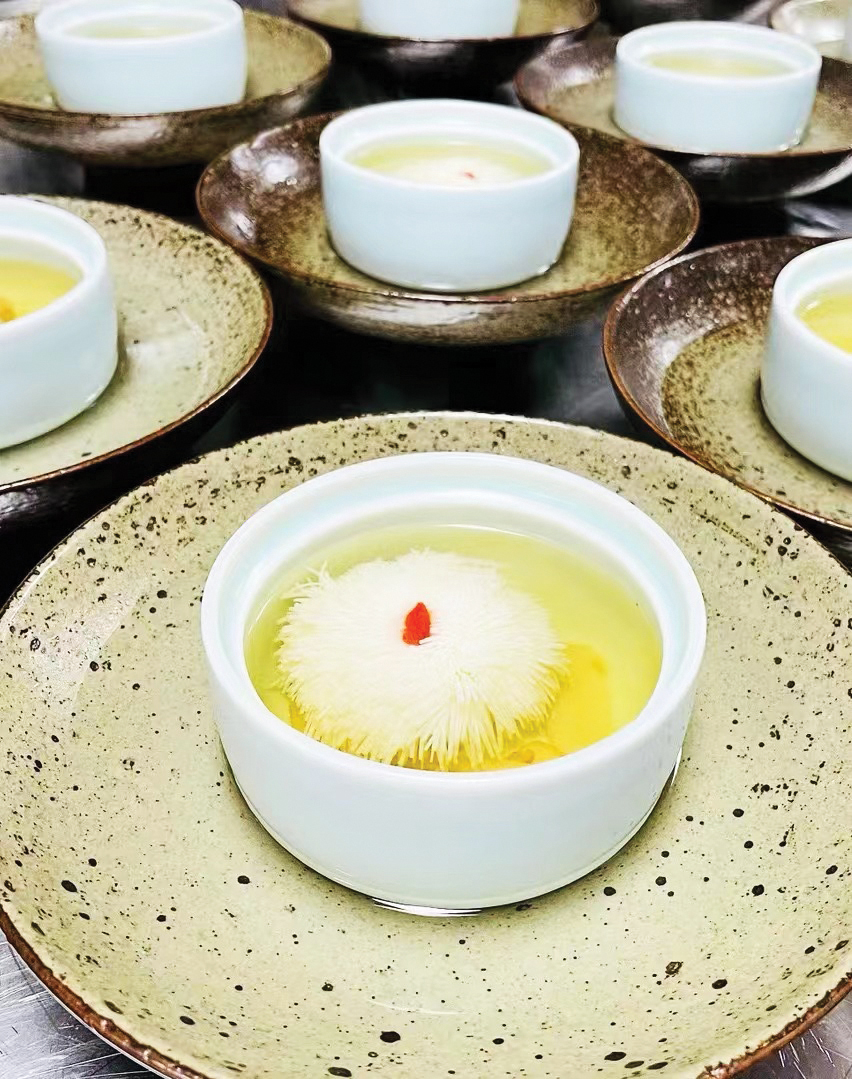
To celebrate the 2024 China-France Year of Culture and Tourism, which also marks 60 years of diplomatic ties between the two countries, a series of cultural activities and experiences will be held at the Salle Gaveau, a classical concert hall in Paris, on May 16.
Highlights include showcases of Chinese tea, traditional Chinese medicine, woodblock printing and delicious food featuring offerings from East China’s Jiangsu province. The cultural promotion activity of Jiangsu province is organized by the provincial department of culture and tourism.
People in Paris can sample the delights of Chinese green tea, especially Jintan sparrow-tongue tea, which is named after the area of Jintan in Changzhou, Jiangsu province, where the tea plants grow. The tea leaves are flat and straight and their uniform and well-arranged strips resemble a sparrow’s tongue, with a lustrous green color. When brewed, the tea buds stand upright in the cup. Approximately 40,000 tea buds can be found in every 500 grams of dried tea.
After a refreshing cup, visitors can learn about traditional Chinese medicine by smelling medicine sachets and experiencing classical treatments such as acupuncture, cupping and herbal plaster application provided by the graduates of the Menghe Medical School. The medical school has a long history, with origins dating back to more than 1,000 years in Menghe, Jiangsu province.
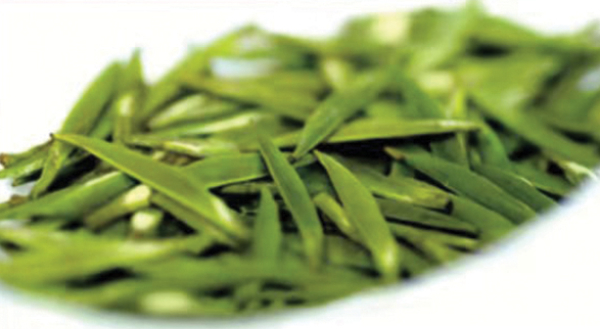
The exquisite processes of Chinese woodblock printing techniques will be shown at the concert hall where people can also appreciate a folk orchestra featuring traditional
Chinese silk and bamboo instruments such as the erhu, pipa and yangqin.
Of course, a bite of delicious Chinese food is an experience not to be forsaken.
One particular highlight is the Chrysanthemum Tofu Soup, which boasts high protein content and has a tender-silky texture.
The tofu is meticulously carved into chrysanthemum shapes, resembling the flower’s delicate petals and is fine as hair strands.
Another star dish is crab roe bun. With thin skin and ample filling, it has a rich and tender crab flavor that leaves a lasting aftertaste. The crabs are sourced from the Yangcheng Lake in Jiangsu province. After slow cooking to extract the crab roe, buns are then meticulously handcrafted.
The cultural activity in Paris serves as a prelude to the forthcoming cultural exchanges between Jiangsu province and cities in France. Shows and cultural activities will subsequently be introduced from France to China later.


